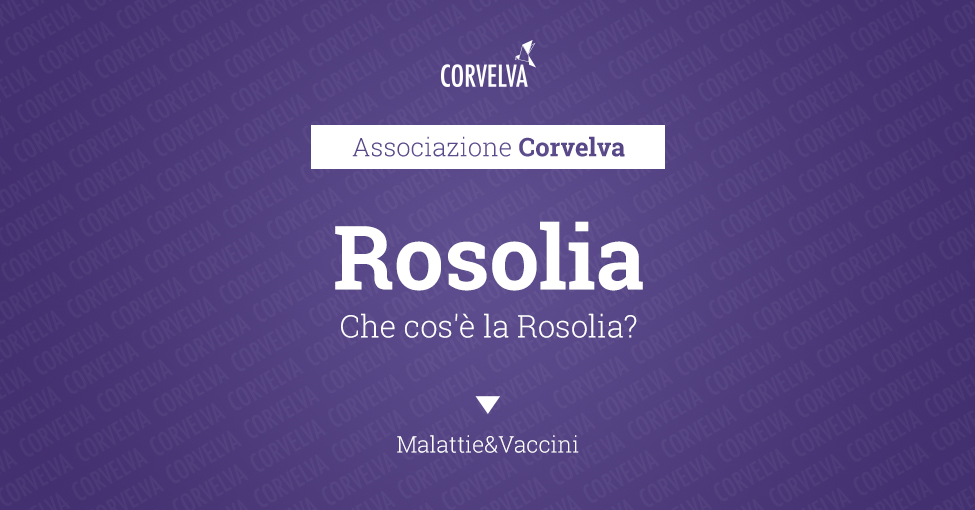What is Rubella?

IMPORTANT NOTE: Corvelva invites you to get in-depth information by reading all the sections and links, as well as the manufacturer's product leaflets and technical data sheets, and to speak with one or more trusted professionals before deciding to vaccinate yourself or your child. This information is for informational purposes only and is not intended as medical advice.
Rubella is a respiratory disease caused by a togavirus, genus Rubivirus.(1) Although often referred to as "German measles" or "three-day measles," this virus is different from and unrelated to the virus that causes measles.(2) Rubella is contagious and is transmitted through direct contact or with respiratory secretions (nasal secretions, coughing, sneezing). People with rubella are most contagious when the rash appears, but they can be contagious for seven days before and seven days after symptoms appear. In temperate climates, rubella usually occurs in late winter and early spring.
Laboratory tests are needed to confirm the diagnosis of rubella, as the rash associated with the disease is not easily distinguishable from other exanthematous diseases. Secretions from the nose and throat, as well as urine and blood, can be tested to confirm the diagnosis of rubella.(3) There are 12 confirmed rubella genotypes (1B, 1C, 1D, 1E, 1F, 1G, 1H, 1I, 1J, 2A, 2B, 2C) and 1 provisional (1a) that belong to two distinct clades.(4) Genotypes 1E, 1G, 1J and 2B are the most commonly circulating genotypes.(5)
The rubella virus is easily destroyed by ultraviolet light, low pH, amantadine, lipid solvents, trypsin, formalin, and heat.(6)
Symptoms of rubella
In children, the first sign of the disease is usually a rash that appears on the face and spreads to the feet. Nonspecific symptoms that may occur one to five days before the rash appears include cough, runny nose, general malaise, headache, low-grade fever, swollen lymph nodes, and swelling or redness of the whites of the eyes.(7) Symptoms in adults are usually similar to those in children, but up to 70% of women may experience arthritis or arthralgia(8) which can be persistent.(9-10) Rare complications of rubella include encephalitis (brain inflammation) and thrombocytopenia purpura (blood clotting disorder).(11) Up to 50% of people with rubella have no symptoms.(12)
Rubella in pregnancy
Rubella is more serious when it occurs in women during the first trimester of pregnancy. Women who develop rubella during this time are at high risk of miscarriage, stillbirth, and birth of a baby with congenital rubella syndrome (CRS).(13)
Newborns with congenital rubella can have multiple health problems affecting nearly every organ in the body, including deafness, vision impairment, heart defects, microcephaly, neurological abnormalities, developmental delays, and more.(14) Up to 85% of newborns exposed to rubella in the first 8 weeks of fetal development are at risk for CRS. At 12 weeks, the risk decreases to 50% and at 20 weeks the risk is essentially zero.(15)
References (click to open)
- Communication and Education Branch, National Center for Immunization and Respiratory Diseases (NCIRD) and the Centers for Disease Control (CDC). Rubella. 13th ed. Centers for Disease Control (CDC) Aug. 18, 2021.
- U.S. Centers for Disease Control and Prevention. Rubella in the US. Dec 31, 2020.
- U.S. Centers for Disease Control and Prevention. For Healthcare Professionals. Dec 31, 2020.
- World Health Organization (WHO). Rubella virus nomenclature update: 2013. ; August 2013; 32(88): 337–348.
- U.S. Centers for Disease Control and Prevention. Genetic Analysis. In: Rubella (German Measles, Three-Day Measles). Dec 31, 2020.
- Communication and Education Branch, National Center for Immunization and Respiratory Diseases (NCIRD) and the Centers for Disease Control (CDC). Rubella. 13th ed. Centers for Disease Control (CDC) Aug. 18, 2021.
- U.S. Centers for Disease Control and Prevention. Signs and Symptoms. Dec 31, 2020.
- U.S. Centers for Disease Control and Prevention. For Healthcare Professionals. Dec 31, 2020.
- Bosma TJ, Etherington J, O'Shea S, et al. Rubella virus and chronic joint disease: is there an association?. J Clin Microbiol. Dec. 1998; 36(12):3524-6.
- Chantler JK, Tingle AJ, Petty RE. Persistent rubella virus infection associated with chronic arthritis in children. N Engl J Med. Oct 31, 1985; 313(18):1117-23 .
- U.S. Centers for Disease Control and Prevention. For Healthcare Professionals. Dec 31, 2020.
- U.S. Centers for Disease Control and Prevention. Signs and Symptoms. . Dec 31, 2020.
- U.S. Centers for Disease Control and Prevention. For Healthcare Professionals. . Dec 31, 2020.
- Communication and Education Branch, National Center for Immunization and Respiratory Diseases (NCIRD) and the Centers for Disease Control (CDC). Rubella. 13th ed. Centers for Disease Control (CDC) Aug. 18, 2021.
- National Organization for Rare Disorders (NORD). Rubella, Congenital. Dec 4, 2022.
This article is summarized and translated by National Vaccine Information Center.

